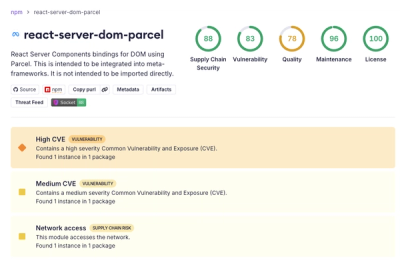mathy_pydoc
IMPORTANT This is a fork of the pydoc_markdown repo to use the legacy version for Mathy's simple API doc needs. See the official repo for the latest stable updates: https://github.com/NiklasRosenstein/pydoc-markdown
– insipired by the [Keras] Documentation
Installation
pip install mathy_pydoc
Usage
mathy_pydoc generates plain Markdown files from Python modules using the
mathy_pydoc command. Specify one or more module names on the command-line.
Supports the + syntax to include members of the module (or ++ to include
members of the members, etc.)
mathy_pydoc mypackage+ mypackage.mymodule+ > docs.md
Syntax
Cross-references
Symbols in the same namespace may be referenced by using a hash-symbol (#)
directly followed by the symbols' name, including relative references. Note that
using parentheses for function names is encouraged and will be ignored and
automatically added when converting docstrings. Examples: #ClassName.member or
#mod.function().
For absolute references for modules or members in names that are not available
in the current global namespace, #::mod.member must be used (note the two
preceeding two double-colons).
For long reference names where only some part of the name should be displayed,
the syntax #X~some.reference.name can be used, where X is the number of
elements to keep. If X is omitted, it will be assumed 1. Example:
#~some.reference.name results in only name being displayed.
In order to append additional characters that are not included in the actual
reference name, another hash-symbol can be used, like #Signal#s.
Sections
Sections can be generated with the Markdown # <Title> syntax. It is important
to add a whitespace after the hash-symbol (#), as otherwise it would represent
a cross-reference. Some special sections alter the rendered result of their
content, including
- Arguments (1)
- Parameters (1)
- Attributes (1)
- Members (1)
- Raises (2)
- Returns (2)
(1): Lines beginning with <ident> [(<type>[, ...])]: are treated as
argument/parameter or attribute/member declarations. Types listed inside the
parenthesis (optional) are cross-linked, if possible. For attribute/member
declarations, the identifier is typed in a monospace font.
(2): Lines beginning with <type>[, ...]: are treated as raise/return type
declarations and the type names are cross-linked, if possible.
Lines following a name's description are considered part of the most recent
documentation unless separated by another declaration or an empty line. <type>
placeholders can also be tuples in the form (<type>[, ...]).
Code Blocks
GitHub-style Markdown code-blocks with language annotations can be used.
```python
>>> for i in range(100):
...
```



